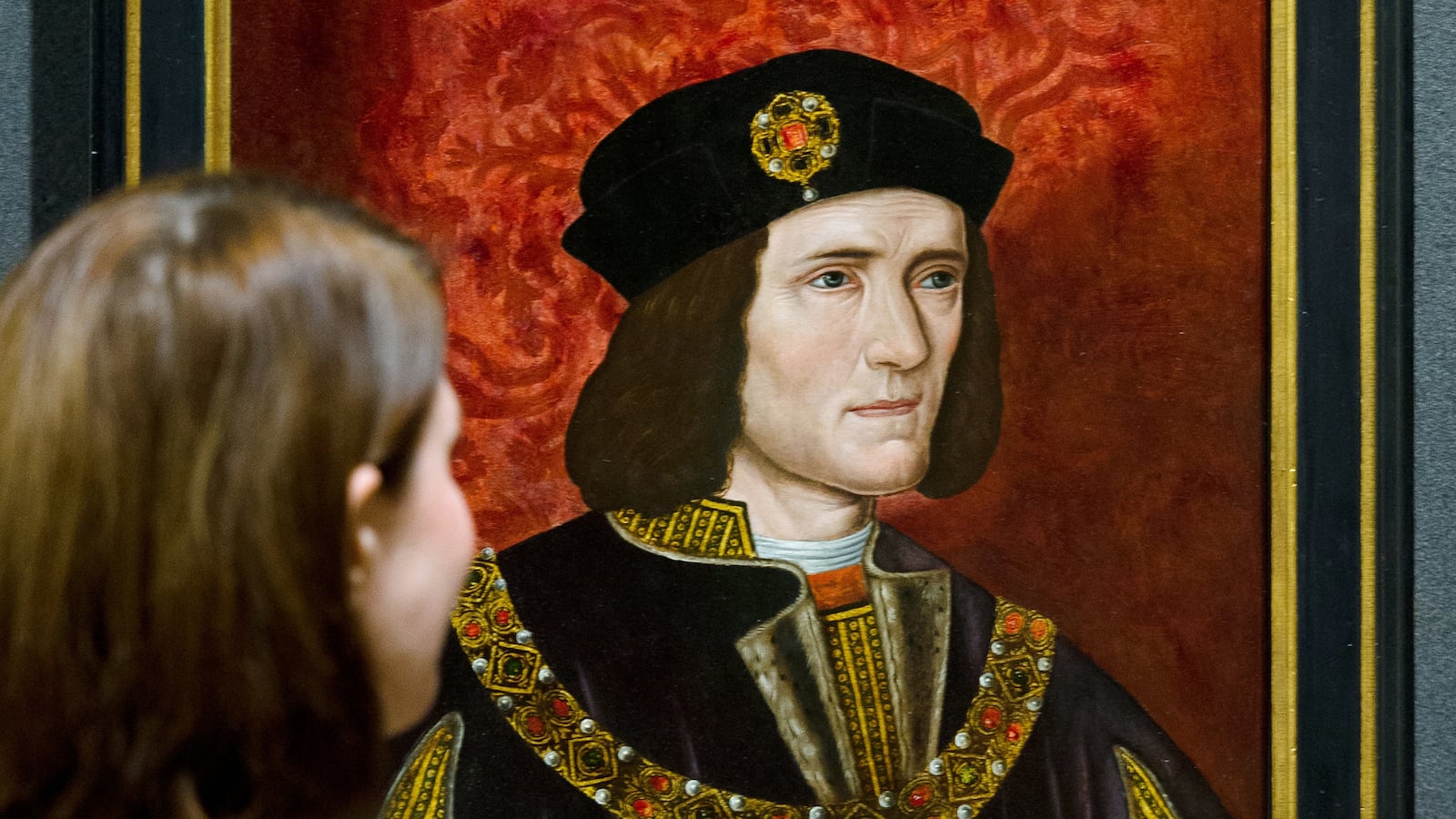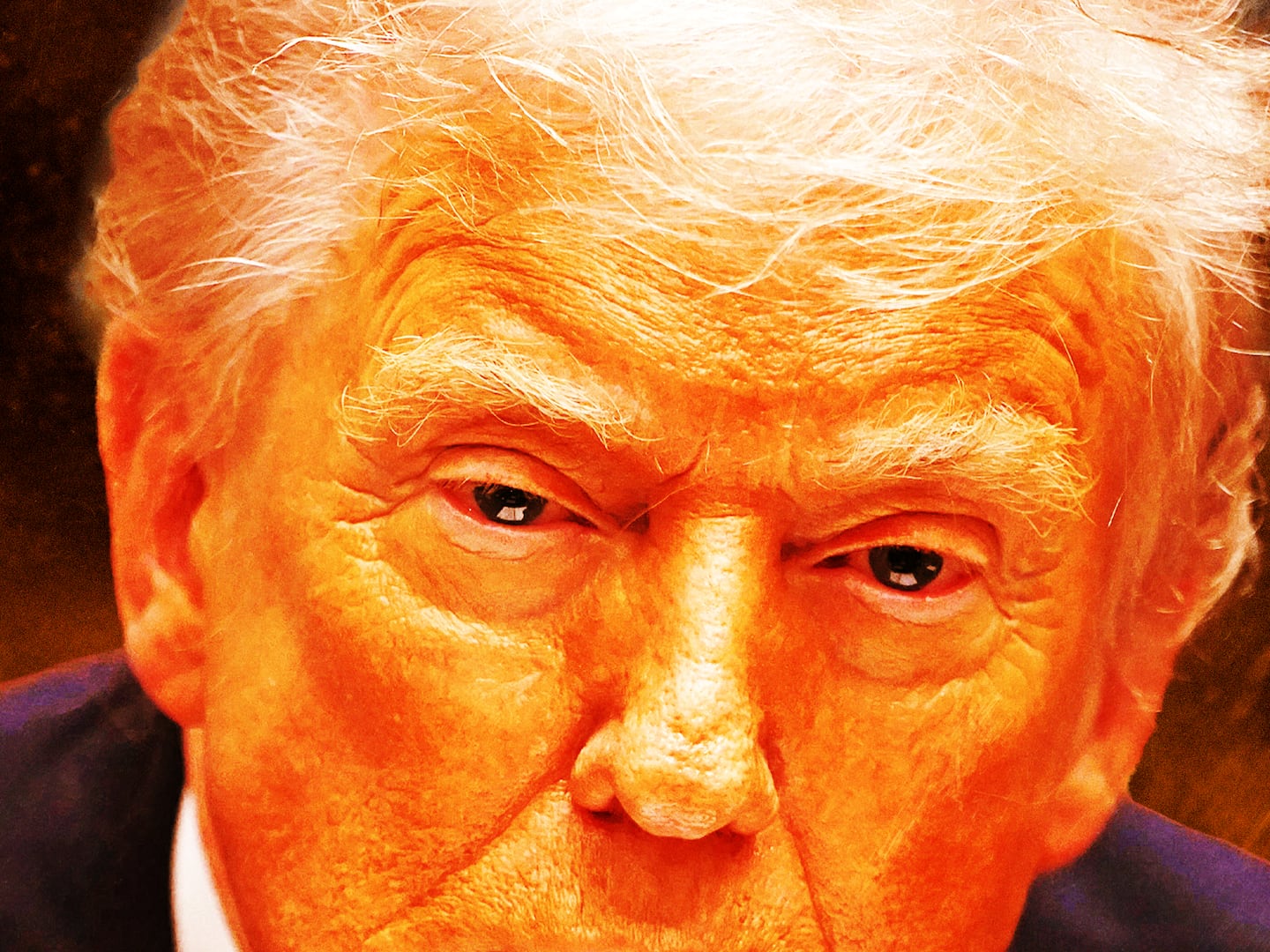Apparently we’ve found the bones of Richard III and a photo of his skeleton has been published. Assuming that the vertebrae have been correctly laid out, there’s a curve in the middle of his spine characteristic of scoliosis. Doctors would call it “idiopathic adolescent scoliosis,” meaning he probably acquired it in adolescence, and we don’t know the cause.

Athletes can have scoliosis without it hampering their performance, and it seems it didn’t hamper Richard's. He was a renowned warrior who fought on foot and horseback, wielding a heavy sword and shield, sometimes simultaneously managing a charging warhorse. He fought with skill and courage at the battles of Barnet and Tewkesbury. And at the fatal battle of Bosworth Field, when his reserve refused to fight, he raced headlong across the field to kill Henry Tudor, who would have been no match for Richard one on one. He scattered Henry’s guard and almost reached Henry before he was overwhelmed and unhorsed by hundreds of hostile troops thrown into the battle at the crucial moment. Surrounded, Richard fought on ferociously until his skull was crushed by a halberd. Henry Tudor, who had a weak claim to the throne, became Henry VII, founding the Tudor dynasty.
Certainly, Richard was not the withered-armed hunchback Shakespeare portrays, scuttling across the stage on uneven legs like an evil spider. His arms were fine, and it is likely that his scoliosis was not even visible under his clothes.
Diplomatic dispatches at the time, written by men who had no reason to lie to their own rulers, reported no hump or withered arm. Nicholas von Popplau, a famous Silesian knight, met Richard in 1484 and described him as three inches taller than von Popplau himself, with slender arms and legs. The Countess of Desmond reported that, at a royal ball, Richard was “the handsomest man in the room” except for his brother, Edward, and “was very well made.”
Portraits of Richard made during his reign showing no hump are also evidence, although, of course, the artists could have omitted it to flatter the king. By the same token, portraits made after his defeat that show Richard with a hump—or at least uneven shoulders—are suspect as Tudor propaganda. But depictions of Richard done in the Tudor period that show no deformity—and there are quite a few—can be considered reliable evidence that there was no hump, or at least that it was not visible when Richard was dressed.
Anyway, physical deformity was not the most serious charge the Tudors brought against Richard. For centuries, he’s been accused of murdering his two nephews in the Tower of London. Perhaps he did, but a good case can be made that he didn’t.
Shakespeare, of course, tells us Richard was guilty. But Shakespeare was writing 100 years after the fact and was writing under the Tudors. Even if he believed Richard was innocent (and he probably didn’t), he could hardly say so under a Tudor monarch.
Richard did have the motive and the opportunity to kill his nephews, but he was intensely loyal to their father, Edward IV—his brother—and it is difficult to square the murder with what we know of Richard’s character. Henry VII had an even stronger motive to kill the boys; and if they were alive after Bosworth Field, he had a splendid opportunity to do the job. (The Duke of Buckingham is also a likely suspect. An arrogant and unstable man, he had his own claim to the throne, and he had the motive, the opportunity, and the proclivity to commit such a crime.)

Then there’s the possibility that the boys weren’t killed at all, but were smuggled out of the country to be kept safely and secretly on the continent. If that happened, it was probably the work of the swashbuckling and mysterious Sir Edward Brampton. Born Duarte Brandão in Portugal, Brampton was a converted Jew, and became an acclaimed English commander on land and at sea. The first Jew to be knighted, he was also a close and trusted friend of Edward IV, as well as of Richard.
If the princes were quietly sent abroad for safekeeping, they probably resurfaced later, one at a time, to claim the throne. Two young men did appear and did assert such claims. Henry VII indicated concern that the boys’ mother and her family would support the claims, suggesting that they may have been legitimate, or at least that Henry feared they were. In the end, however, both claimants were unsuccessful. The first claimant may have been killed in battle against Henry’s forces. The second traveled with Brampton’s wife and probably with Brampton himself. He was accepted as the younger prince in a number of European countries and was even wed to a member of the Scottish royal family. Later, he was captured by Henry, “confessed” that he was an imposter and was executed. He may well have been the missing prince. But that’s another story.
What if Richard had succeeded in killing Henry at Bosworth Field? There would have been no Tudor Dynasty, no Henry VIII and no “English Reformation” designed to allow the king to divorce Catherine of Aragon and marry Anne Boleyn. There would have been no “Bloody Mary” and no Elizabeth I. English history might have been changed in many significant ways, and perhaps American history as well.
Even now, religion may create an issue. When Richard died, he was a Catholic in Catholic England. Today, of course, the royals are members of the Anglican Church, England’s “established” religion. A Catholic cannot succeed to the throne. But what’s to be done with a dead Catholic king? Will he be buried in an Anglican cathedral? Will he receive Catholic rites? And who gets to decide? Stay tuned.





